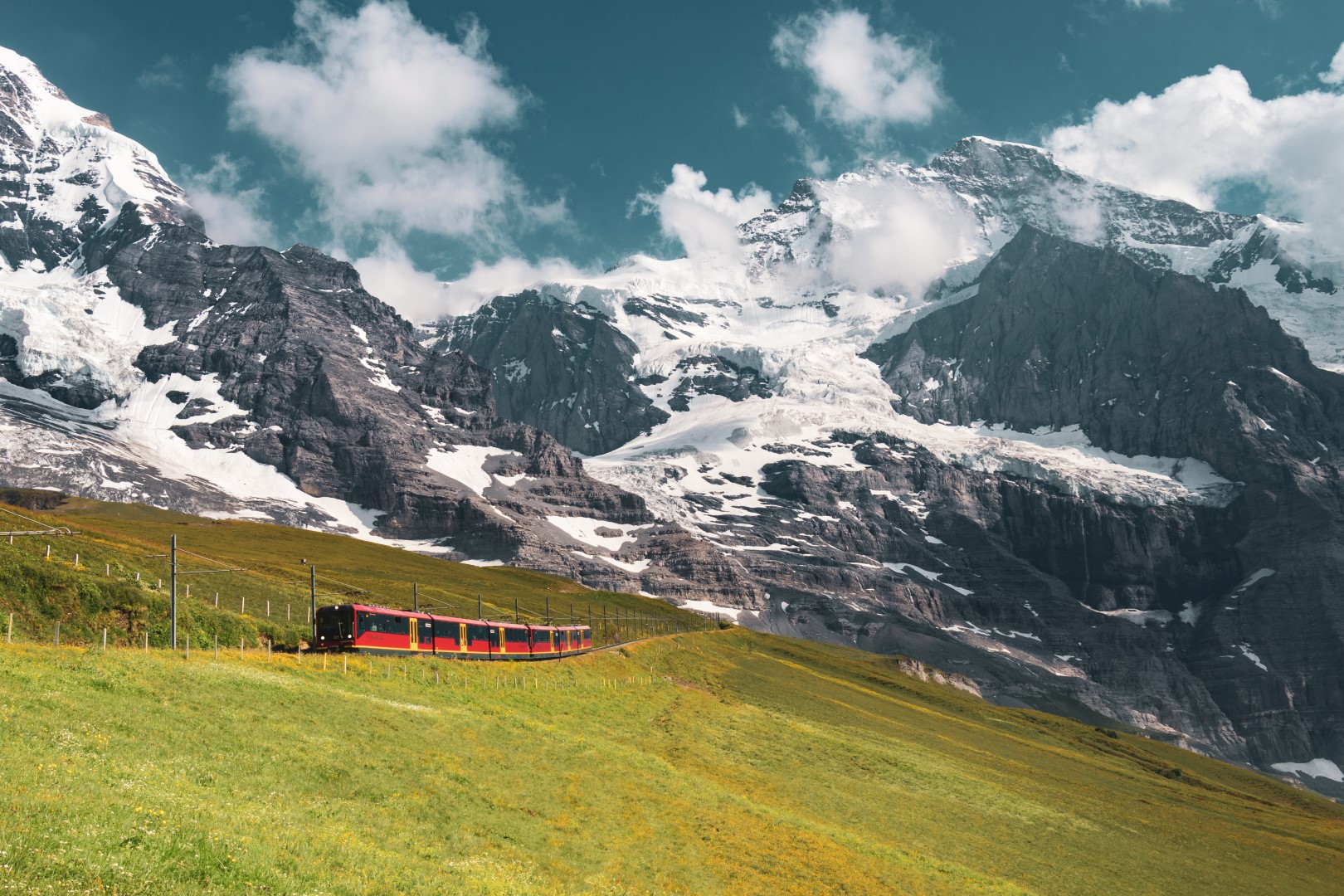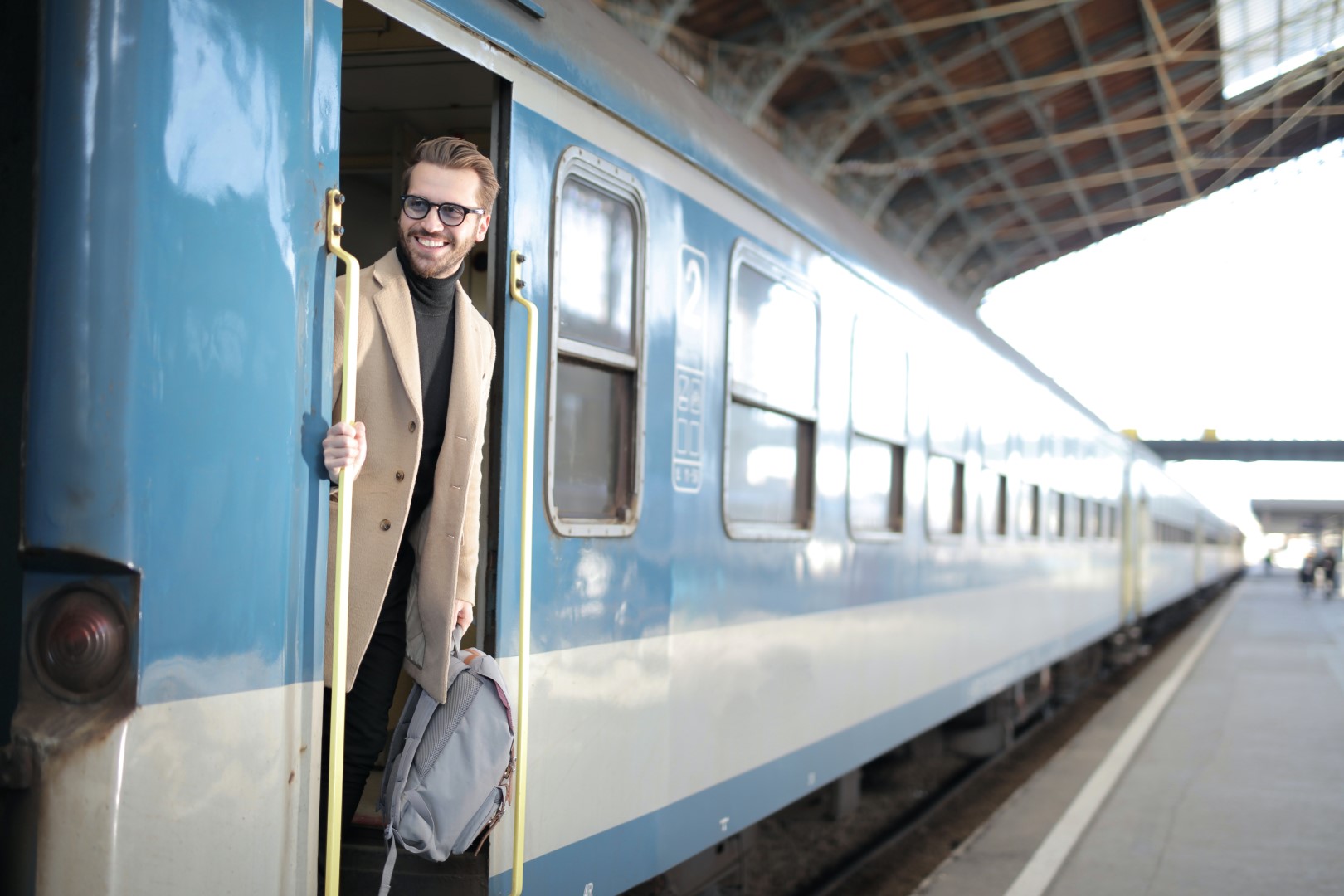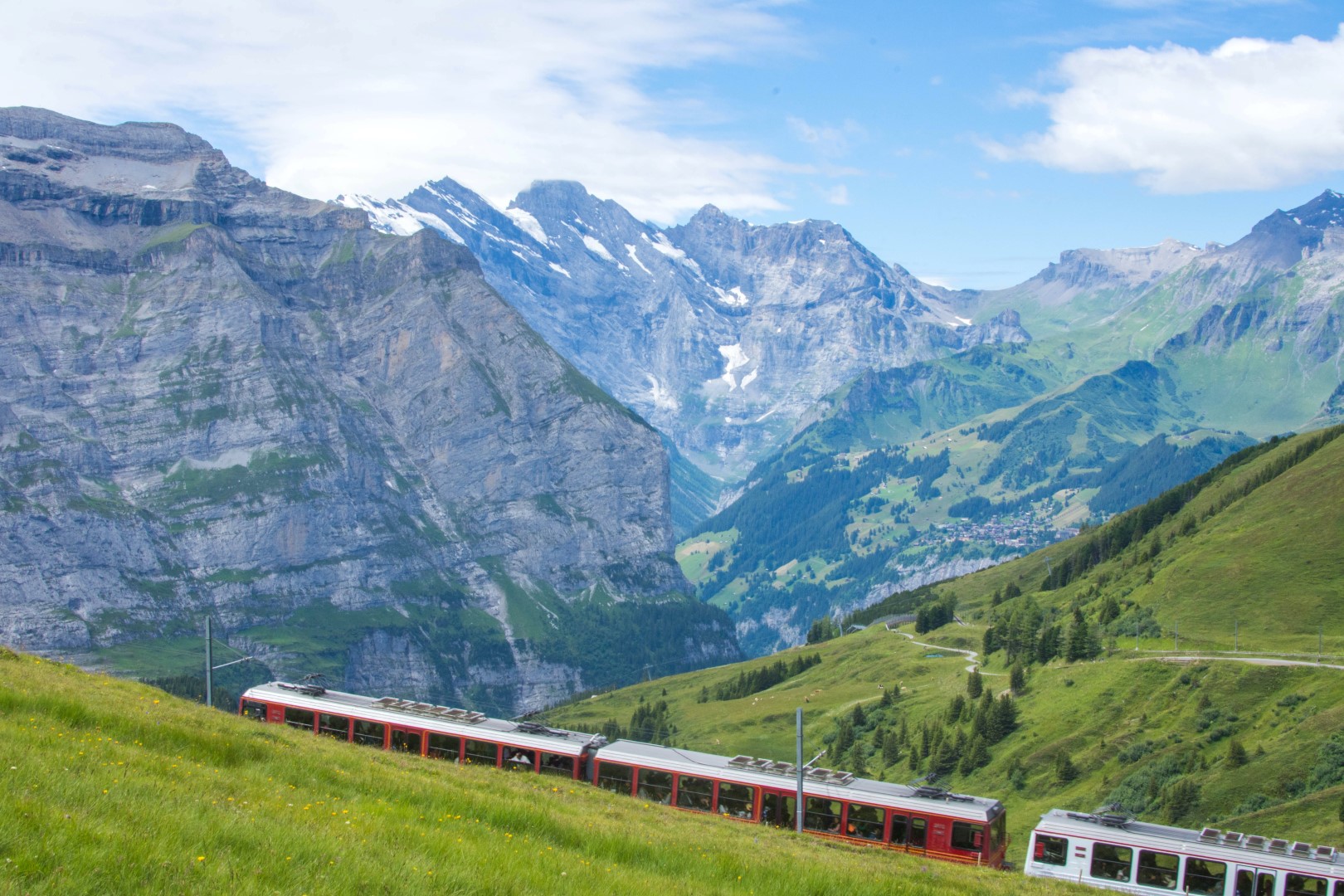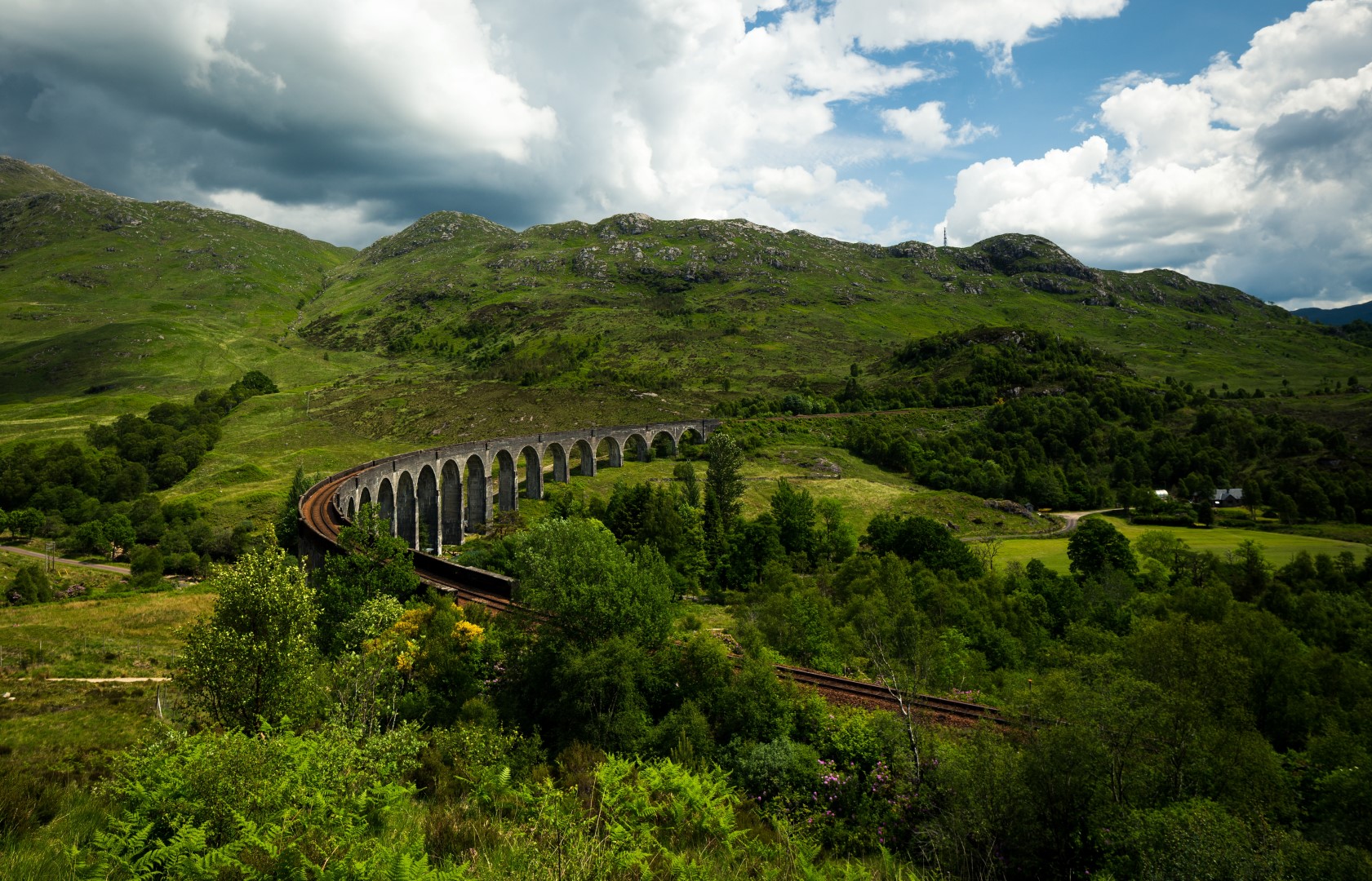While it’s not yet time to return to travel, armchair travel is definitely warranted and we can enjoy planning future adventures! Stay safe, stay home. We look forward to emerging from this difficult time — together — and with an even greater appreciation for what is unique and wonderful about home and the wider world.
Traveling to Europe by plane is, of course, great, but air travel also has its disadvantages and routine: get up at dawn, get to the airport, worry about luggage, go through a tedious search, wait for boarding, see some clouds from the porthole, and after landing you still somehow need to get to the city. Whereas traveling by train in Europe means take as many suitcases as you like, the train station is likely in the city center, Wi-Fi is available and there’s a beautiful view outside the window. European train travel is a pleasure! Take a look at how to travel by train in Europe.

10 Benefits of Traveling Across Europe by Train
Here are some of the benefits of travel by train in Europe:
- Short distances and an extensive railway network – you can travel all over Europe by train, including some islands. All this gives Europe trains many advantages over airplanes.
- Prices for train tickets are not always cheaper than for a plane, but you can save by buying a ticket in advance or on the stock. By purchasing tickets for European trains in 60–90 days, the price is significantly reduced. Tickets for sit-down night trains are also cheaper than sleeping cars.
- A plane ticket often does not include full baggage – for low-cost airlines, the cost of baggage can be more expensive than a flight. And you can take a large suitcase on the train, and not one – everything you need, and even bring a bunch of gifts from Europe. Plus, your luggage is always with you – there is no risk that it will be lost.
- Flexible train schedules. You can choose both daytime and nighttime trains.
- Trains most often depart and arrive from/to the city center – no need to waste time and money getting to the airport. Low-cost airlines, as a rule, fly to low-cost airports, transfer from which is not inexpensive (minimum € 10–20). Plus, by the time of the flight, you need to lay a couple of hours for check-in and time to get to/from the airport.
- Unlike traveling by plane, you can see the country and its beauty traveling by train.
- Night trains allow you to save on a hotel. You can plan your trip so that you spend part of the night on the train. In this afternoon, you can walk around the city and not spend money on a hotel.
- For those who suffer from fear of flying or because of health reasons they cannot fly, the train is perhaps the most inexpensive and comfortable option for traveling in Europe.
- Traveling by train is less likely to break due to the vagaries of the weather.
- Trains will take you where planes do not fly.
- Often, railway fares are designed so that you can travel on a single ticket for at least 24 hours. This makes it possible to see additional cities during the trip – you can safely get off at stops and catch the next train going in your direction.

The Disadvantages of Travel by Train in Europe
These are some of the difficulties you may encounter with train travel in Europe:
- The main disadvantage is that European (for example, Spain and Italy) railway companies often organize strikes. According to statistics, this happens dozens of times more often than pilots or air traffic controllers on strike. Because of the strikes, the schedule gets lost. But strikes are announced in advance, so there is time for a decision and a change of route. Train delays can occur regardless of strikes – you just need to accept the fact that trains can be late, even in punctual Europe.
- On the money, traveling by train in Europe is not always the best option money-wise. Nevertheless, there are countries where this is the cheapest way to travel. And there are those where a long route will cost you much more than a bus, or even for a low-cost flight. Therefore, it is worthwhile to study prices well before choosing a train.
- Very often, a train is the longest way to get to the right place. If we are not talking about a high-speed train, but a regular one, with sleeping cars, then it will stop in every small town. This is an advantage for those who plan a trip to just such a point, but a disadvantage for those whose time is limited.
- If you decide to save time and choose a high-speed train, you will get there much faster, and they usually have seats where you can sleep better than on a bus.
- Depending on the country in which you’re traveling and your own knowledge of the local language, language barriers may exist. It’s true that English is spoken nearly everywhere and most signs are available in English. But you still may encounter some difficulty navigating the train station. Quick announcements, a bunch of underground and ground platforms – the larger the city, the larger its station. If the train is shifted to another track or delayed, it may be difficult to understand. Things are usually much simpler with buses.

Types of Trains
There are several types of European trains: suburban, regional, fast, high-speed, sleeping.
- Suburban trains, or electric trains, run for short distances, often connecting urban transport with the railway. They are inexpensive.
- Regional trains travel around the country, but with frequent stops – in almost every locality. Because of this, they are inexpensive, they can often be found on promotional tickets (weekend, group tickets, etc.).
- Fast trains, or Intercity, which travel long distances, usually cross an entire country or several countries. Such trains make stops only in large cities and at central stations. A high level of comfort, the train often has a restaurant car or buffet, as well as TVs and Wi-Fi.
- High-speed trains on which you can travel from one end of the country to the other in a couple of hours. Such express trains reach speeds of up to 200-300 km/h. The ticket price corresponds to speed and comfort level. Class I passengers are provided with free drinks and snacks.
- Sleeping night trains have several types of wagons: sitting, couch, and sleeping. In couches and sleeping cars, a seat must be reserved in advance. Seats are usually laid out, the conductor will offer you a pillow and a blanket.
Types of Tickets
Globally tickets can be divided into the following types:
- one way (from point A to point B);
- there and back (as a rule, it saves up to 30% of the cost);
- temporary ticket (travel time paid, not distance);
- a ticket with an open date (the most expensive one does not require a reservation, you can take a train on any ticket at any time that goes in the chosen direction and for which a preliminary reservation is not required).

More on Train Tickets
Please note that not all countries still accept electronic tickets online. Sometimes you need a paper printout. Moreover, paper tickets are divided into three categories:
Paper ticket – If you book and pay for a ticket online, and then the transport company sends it to you by regular mail. Forwarding can take up to a month, and there is a risk that the letter will not reach. In this case, it is better to buy a ticket on the spot – at the box office or machine, although with an overpayment, but not to find out then the long-term relationship with the mail and railway company.
Electronic (Print at home e-ticket) – After payment, you print a ticket at home and take it with you. By e-mail, they can send a PDF document or a link to it, by which it is necessary to print the document. If there are no attachments, then email is your ticket. Print the ticket and take it with you. Either a reservation code is sent to you, this is the only case when it is not necessary to print a paper version. The system is almost the same as with electronic tickets: you need to show your passport and reservation code, for example, from a mobile.
Paper tickets that need to be printed at the station (Print at the station e-ticket) – These tickets must be printed at the box office or in a special self-service kiosk. After payment, an e-mail with a reservation number arrives. This is entered when printing a ticket from a special machine. Please note that there are routes on which you can print a ticket at a kiosk only at the station from which you depart initially. For example, if you have a ticket from Paris to Venice and vice versa, then in Paris you need to print a ticket for both directions: Paris – Venice, and Venice – Paris.
It is worth paying attention to the need for validation of tickets. Specify the need for purchase or at the box office at the departure station. In many countries, if you bought a ticket and don’t validate it, you are considered a fare dodger. The fines for stowaways are substantial! Validation is usually carried out at the station. Yellow or green validators are installed on the platforms or in the station building. When you submit the ticket in them, the date and time of boarding the passengers on the train are imprinted on it.

How to Buy Tickets and Save
Train tickets can be bought both at the station and online. The first option is beneficial only for commuter trains, where the ticket price is small (€ 1–5). When buying tickets for long distances, it is better to do this in advance through the official website of the railway company. This way, you won’t pay an additional commission, as intermediaries do. An example of such intermediaries is www.raileurope.com. When buying and booking tickets, you can use the train ticket aggregator – https://loco2.com/, where you can book a ticket and pay later. Or set an alert that will work when the ticket price drops.
For extended travel by train in Europe, don’t overlook the possibility of buying a Eurail Pass. Eurail Passes must be purchased from your home country. Depending on your itinerary and the length of your trip, Eurail Passes can save a substantial amount of money and make train travel even easier. There are a number of different types of passes and discounts available. Do look into this option.
Buying a ticket at the station is possible at the box office or through machines, in which in most cases you can choose the language (Again, English is everywhere.) At the checkout, you will have to stand in line and talk to the cashier. But this is not difficult; just request the station, time and date.
It is also easy to book a train ticket online – as a rule, every European site has an English version. Also, online shopping can save a lot: the price difference, in this case, can be 50%. The sale opens mainly in 60–90 days. But there are exceptions: for example, the Eurostar train, which runs between London and Paris, takes 120 days to complete.
Discounts are provided for children, seniors/pensioners (from 60 years old) and youth (up to 26 years old): a ticket is obtained for 25-30% cheaper than the full fare. Also in Europe, discounts are provided for students who have an ISIC international student ID. It can be purchased in advance in Ukraine: this is a profitable thing for students, it pays off quickly due to transport, discounts on museums, libraries, attractions. If you are traveling with a company, then check the offers for groups – such tickets can also be cheaper than regular fares.

Beautiful Train Travel Routes
Now that you know more about how to travel by train in Europe, I offer five of my favorite and most picturesque railway routes in Europe.
- Switzerland – the Glacier Express. An express train with panoramic windows connecting the mountain resorts of St. Moritz and Zermatt in the Swiss Alps. During the 8-hour route, passengers enjoy the beauty of alpine peaks and glaciers. The train passes 291 arched bridges and 91 tunnels.
- Norway – Bergensbanen. The train daily runs on the Oslo – Bergen route, it takes almost seven hours to get there. This is the most famous railway in Norway, built back in 1909. The path runs through 182 tunnels and rises to a height of 1237 m above sea level. From this height, stunning views of the beauty of the Norwegian nature open: fjords, waterfalls, lakes, and mountains.
- Portugal – Linha do the Douro. The railway line, opened in 1887 in Portugal, is 160 km from Porto to Posinho. The route passes through the famous Doro River Valley, which winds through the hills covered with vineyards. You’ll go through 20 tunnels and over 30 bridges with stops at 34 stations. The retro train, sandwiched between the river and the mountain, travels slowly, so you can enjoy the views with pleasure.
- Italy, Switzerland – Centovalli Express. The railway route between Italy and Switzerland connects the Gottard and Simplon lines, that is, the cantons of Ticino and Valais. The railway does not just transport, it is also an excursion route during which passengers enjoy the magnificent scenery of Centovalli and the Vigezzo Valley.
- United Kingdom – The West Highland Railway. The railway laid from Scottish Glasgow to Fort William, and then to Mulligan. This is one of the most scenic of the famous routes. You’ll pass through the plain of Rannoch Moore and the hills of Scotland. The most beautiful and interesting part of the way is the Glenfinnan Viaduct, the same one along which Hogwarts Express cruised with Harry Potter.
For More:
- Eurail Passes
- On our site: 10 Reasons to Take a European Cycling Trip
- On our site: A Historic Getaway in Durango, Colorado


